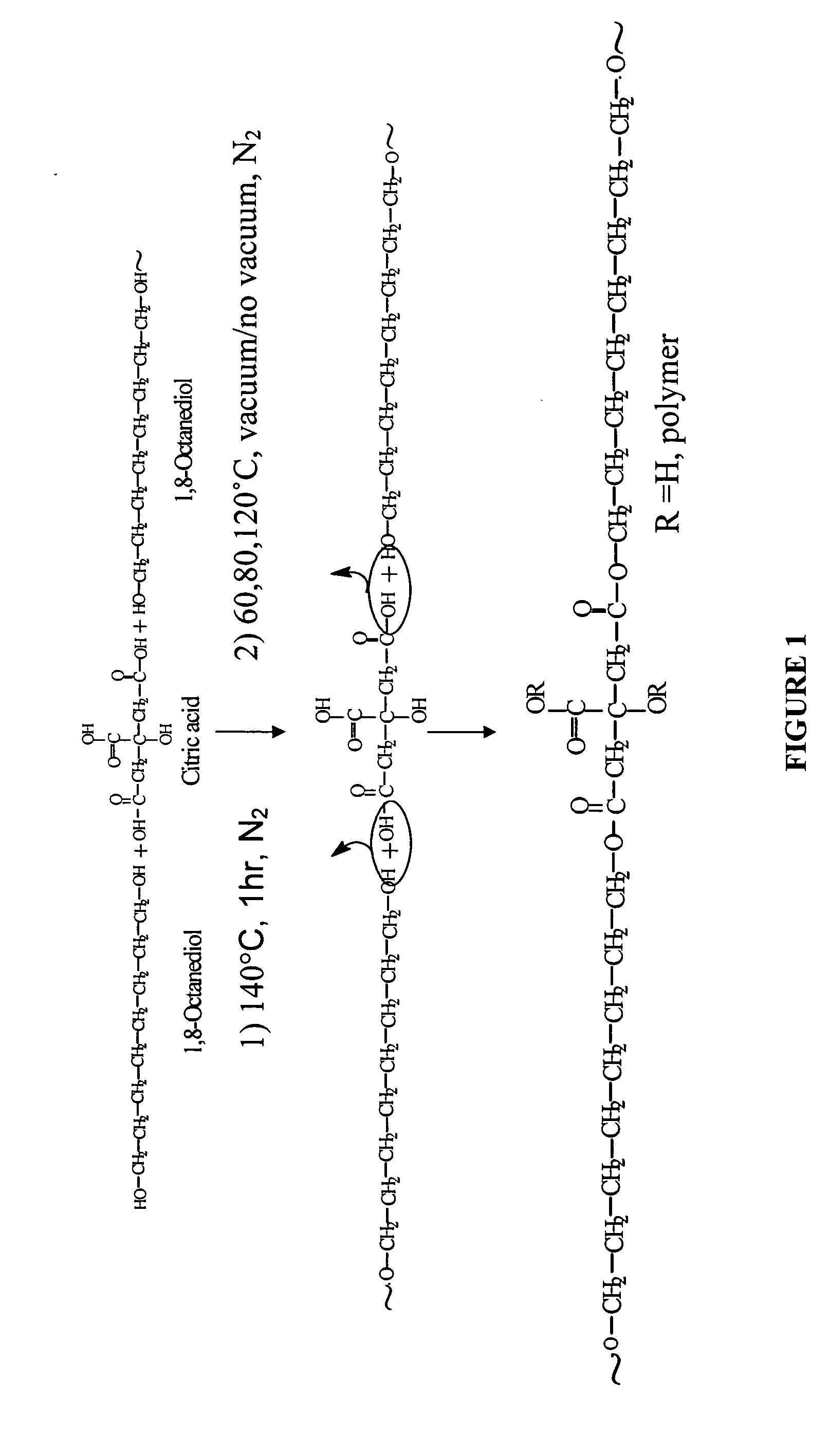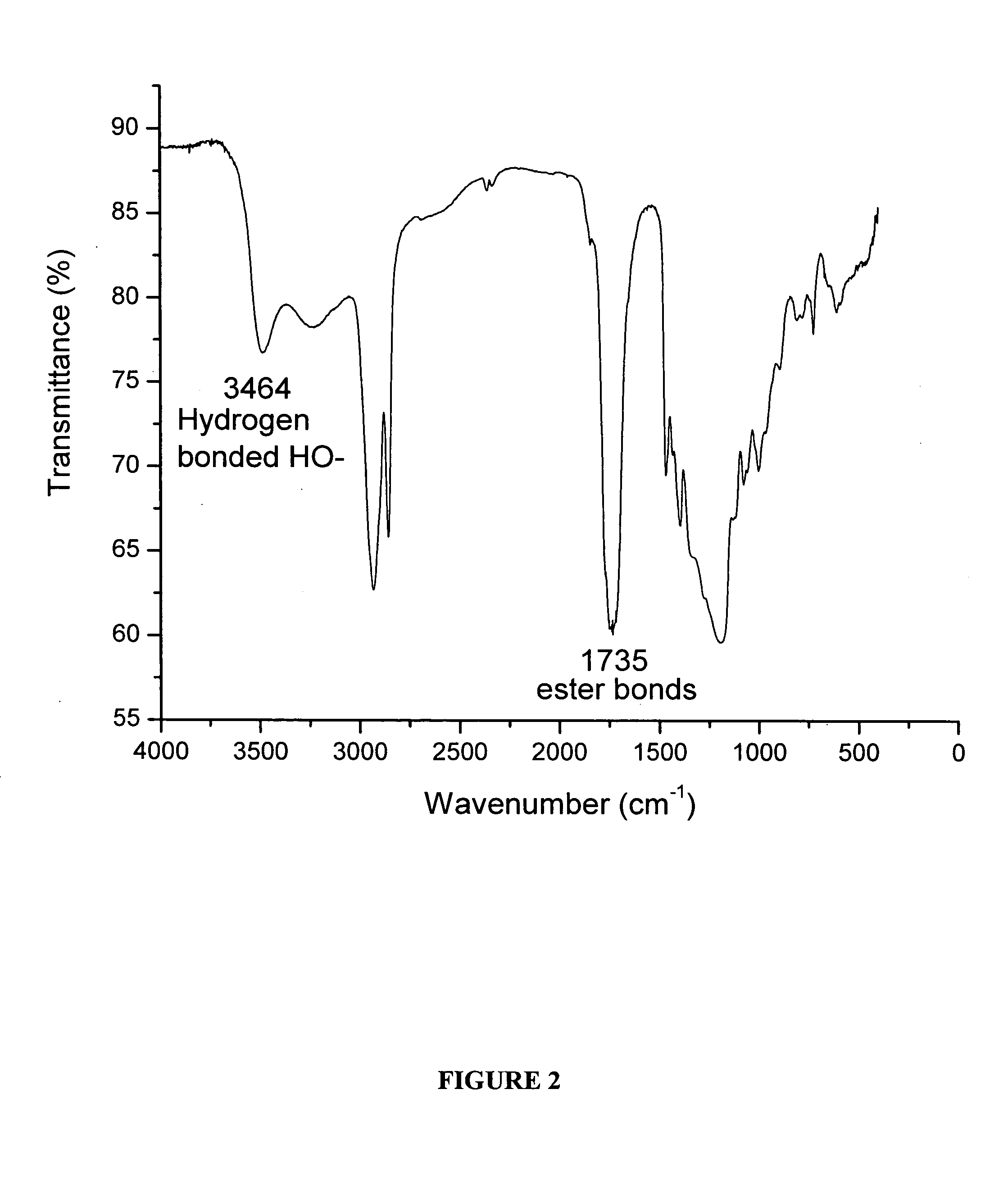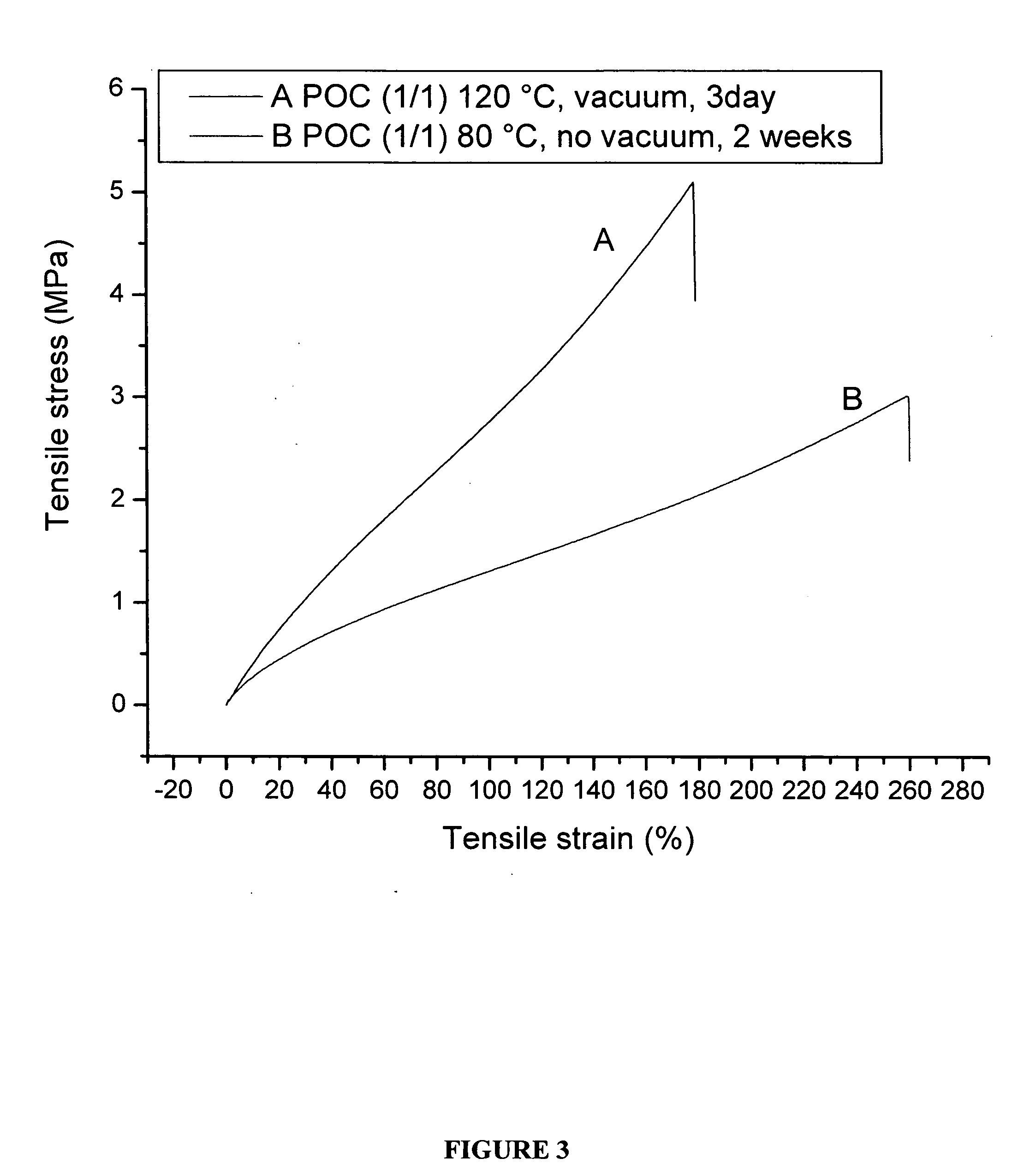Novel biodegradable elastomeric scaffold for tissue engineering and light scattering fingerprinting methods for testing the same
- Summary
- Abstract
- Description
- Claims
- Application Information
AI Technical Summary
Problems solved by technology
Method used
Image
Examples
example 1
Preparation of Poly(1,8-Octanediol-co-citric acid) (POC)
In a typical experiment, 19.212 g citric acid and 14.623 g Octanediol were added to a 250 mL three-neck round-bottom flask, fitted with an inlet adapter and an outlet adapter. The mixture was melted within 15 min by stirring at 160-165° C. in silicon oil bath, and then the temperature of the system was lowered to 140° C. The mixture was stirred for another 1 hr at 140° C. to get the pre-polymer. Nitrogen was vented throughout the above procedures. The pre-polymer was post-polymerized at 60° C., 80° C. or 120° C. with and without vacuum for predetermined time (from one day to 3 weeks depending on the temperature, with the lower temperatures requiring longer times) to achieve the Poly(1,8-octanediol-co-citric acid). Nitrogen was introduced into the reaction system before the polymer was taken out from reaction system.
Porous scaffolds of POC (tubular and flat sheets) were prepared via a salt leaching technique. Briefly, sodium...
example 2
Preparation of Porous Scaffolds of POC
Porous scaffolds of POC (tubular and flat sheets) were prepared via a salt leaching technique as follows: POC pre-polymer was dissolved into dioxane to form 25 wt % solution, and then the sieved salt (90-120 microns) was added into pre-polymer solution to serve as a porogen. The resulting slurry was cast into a poly(tetrafluoroethylene) (PTFE) mold (square and tubular shape). After solvent evaporation for 72 h, the mold was transferred into a vacuum oven for post-polymerization. The salt in the resulting composite was leached out by successive incubations in water (produced by Milli-Q water purification system every 12 h for a total 96 h. The resulting porous scaffold was air-dried for 24 hr and then vacuum dried for another 24 hrs. The resulting scaffold was stored in a dessicator under vacuum before use. Porous scaffolds are typically preferred when cells are expected to migrate through a 3-dimensional space in order to create a tissue slice...
example 3
Characterization of POC
The following Example provides details of methods and results of characterization of POC.
Methods
Fourier transform infrared (FTIR) spectroscopy measurements. Infrared spectra were recorded on a Biorad FTS40 Fourier transform infrared spectrometer. Sample POC films with thickness of 12-16 microns were prepared from POC solid samples using a Microtome.
Mechanical Tests. Tensile tests were conducted according to ASTM D412a on an Instron 5544 mechanical tester equipped with 500 N load cell. The POC sample size was 26×4×1.5 mm.
Differential scanning calorimetry (DSC) measurements. Differential scanning calorimetry thermograms were recorded in the range of −80 to 600° C. on a DSC550 (Instrument Specialists Inc.) instrument at a heating rate of 10° C. / min.
In vitro degradation. The disk specimen (7 mm in diameter, about 1 to 1.5 mm thickness) was placed in a small container containing 10 ml phosphate buffer saline (pH 7.4). The container was incubated at 37° ...
PUM
| Property | Measurement | Unit |
|---|---|---|
| temperature | aaaaa | aaaaa |
| temperature | aaaaa | aaaaa |
| temperature | aaaaa | aaaaa |
Abstract
Description
Claims
Application Information
 Login to View More
Login to View More - R&D
- Intellectual Property
- Life Sciences
- Materials
- Tech Scout
- Unparalleled Data Quality
- Higher Quality Content
- 60% Fewer Hallucinations
Browse by: Latest US Patents, China's latest patents, Technical Efficacy Thesaurus, Application Domain, Technology Topic, Popular Technical Reports.
© 2025 PatSnap. All rights reserved.Legal|Privacy policy|Modern Slavery Act Transparency Statement|Sitemap|About US| Contact US: help@patsnap.com



